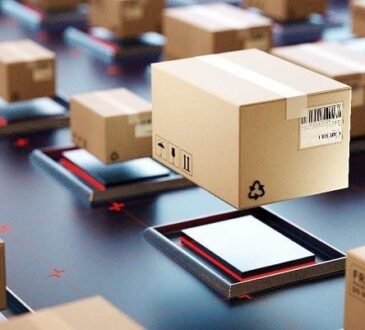When it comes to automotive parts packing, selecting the appropriate packaging solution is essential to ensure that parts arrive safely and intact. Whether you’re shipping delicate sensors or bulky engine components, the decision between custom and standard packaging can significantly influence both costs and efficiency. This article explores the advantages and disadvantages of each option, guiding you toward the best choice for your specific needs.
Why Custom Packaging Could Be Your Secret Weapon
Custom packaging offers a multitude of benefits, particularly for businesses that handle specialized or high-value automotive parts. Here are some of the most significant advantages:
-
Precision Fit: Custom packaging is specifically designed to match the dimensions and shape of the automotive part, ensuring a secure fit. This precision minimizes movement within the package, reducing the risk of damage during transit. For fragile or uniquely shaped components, this feature is particularly beneficial.
-
Enhanced Protection: Custom solutions can incorporate specialized materials like foam inserts, shock absorbers, or moisture barriers. These additions provide superior protection against environmental factors, vibration, and impact, ensuring that even the most delicate parts arrive in perfect condition.
-
Optimized Space Utilization: With custom packaging, you can maximize space efficiency. The packaging can be designed to fit parts more compactly, reducing wasted space and potentially lowering shipping costs by allowing more products to be packed into a single shipment.
-
Branding Opportunities: Custom packaging also serves as a powerful branding tool. It can be designed with your company’s logos, colors, and other branding elements, helping to enhance brand recognition and create a memorable unboxing experience for customers.
-
Improved Efficiency: Tailored packaging often leads to more efficient packing and unpacking processes. With inserts and compartments designed specifically for your products, workers can more easily organize, pack, and identify parts, reducing labor costs and improving workflow efficiency.
-
Environmental Benefits: Though custom packaging often involves more materials, it can be designed to use sustainable or recyclable options. Additionally, by minimizing damage and waste, custom packaging can contribute to a more environmentally friendly operation over the long term.
These compelling advantages make custom packaging an attractive choice, particularly for companies that prioritize protection, branding, and efficiency. However, there are some potential drawbacks to consider before making a final decision.
The Flip Side: What You Might Miss with Custom Solutions
While custom packaging offers numerous benefits, it’s not without its challenges. Here are a few potential downsides to consider:
-
Higher Costs: The most significant disadvantage of custom packaging is the cost. Developing packaging that is tailored to specific parts involves design, tooling, and material costs, which can be significantly higher than standard options. For smaller companies or those with tight budgets, this can be a major consideration.
-
Longer Lead Times: Creating custom packaging takes time. From the initial design phase to production, the lead times can be much longer compared to off-the-shelf standard packaging. This delay can be problematic if you need to scale production quickly or if there’s a sudden spike in demand.
-
Complexity in Logistics: Custom packaging can sometimes add complexity to logistics. If your products require different types of packaging, managing these variations in the supply chain can be challenging. It might involve additional planning, storage space, and coordination, which can increase the risk of errors and inefficiencies.
-
Environmental Concerns: Custom packaging often uses more materials, especially if protective layers or specialized inserts are required. This can lead to increased waste, making it less environmentally friendly compared to standard packaging solutions.
While these drawbacks are important to consider, the benefits of custom packaging often outweigh these challenges, particularly for businesses dealing with delicate or high-value parts.
Standard Packaging: The Reliable Road Less Traveled
Standard packaging remains a viable and often preferable option for many automotive parts manufacturers. Here’s why:
-
Affordability: Standard packaging is typically more cost-effective than custom solutions. These materials are produced in bulk, and the economies of scale make them significantly cheaper per unit. This is ideal for businesses looking to minimize expenses without sacrificing product protection.
-
Immediate Availability: One of the major advantages of standard packaging is its availability. Since these products are mass-produced, they can be sourced quickly, allowing businesses to respond to market demands with little delay.
-
Simplicity and Convenience: Standard packaging is straightforward and easy to use. There’s no need for specialized training or complicated packing processes, which can help streamline operations and reduce labor costs.
-
Versatility: Standard packaging is designed to be versatile, accommodating a wide range of products. This flexibility can be particularly beneficial for businesses that handle various types of automotive parts, as a single packaging option can often serve multiple purposes.
While standard packaging is undoubtedly cost-effective and reliable, there are situations where custom solutions are more appropriate.
When Custom Packaging is Worth the Extra Mile
Despite the benefits of standard packaging, certain situations necessitate the use of custom packaging to ensure optimal results.
-
Handling Delicate or Irregular Parts: If your automotive parts are fragile, unusually shaped, or have high-value components, custom packaging offers the best protection. The tailored fit and specialized materials can safeguard against potential damage more effectively than generic solutions.
-
Enhancing Brand Image: For companies looking to strengthen their brand image and stand out in the market, custom packaging is invaluable. The ability to design packaging that reflects your brand’s identity can create a stronger connection with customers and set your products apart from the competition.
-
High-Volume Shipments: For businesses that deal with high-volume shipments, the initial investment in custom packaging can pay off in the long run. Efficiency gains, lower damage rates, and potential labor savings can outweigh the higher upfront costs over time, making custom packaging a more economical choice.
In these cases, the tailored benefits of custom packaging clearly justify the investment, providing advantages that standard packaging cannot match.
Balancing Cost with Performance: Finding the Sweet Spot
When deciding between custom and standard packaging, it’s crucial to weigh the costs against the benefits in terms of performance. Custom packaging offers superior protection, branding opportunities, and efficiency in certain scenarios but comes with higher costs and longer lead times. On the other hand, standard packaging provides an affordable and readily available option that may suffice for many automotive parts, particularly those that are less fragile or more regularly shaped.
Ultimately, the decision should be guided by your specific needs, the importance of branding, and your budget. High-value, delicate, or uniquely shaped parts might warrant the investment in custom packaging. However, for more generic parts or when working within tighter budget constraints, standard packaging could be the most practical and efficient choice.
Driving the Decision Home: Making the Right Packaging Choice
Choosing between custom and standard packaging is a decision that can significantly impact your business’s bottom line, operational efficiency, and customer satisfaction. Custom packaging provides tailored benefits that include enhanced protection, branding opportunities, and optimized space utilization, making it ideal for specific needs. However, it does come with higher costs and longer lead times. Standard packaging, with its affordability, simplicity, and immediate availability, offers a reliable and cost-effective alternative for many automotive parts. By carefully evaluating your product requirements, budget, and brand positioning, you can select the packaging solution that best aligns with your business goals, ensuring the safety and satisfaction of your customers.




